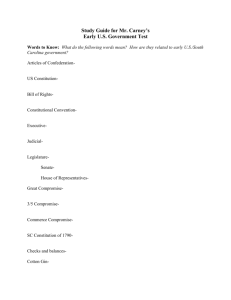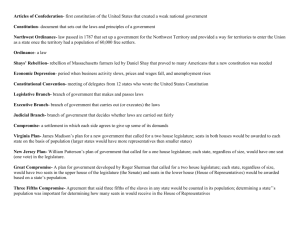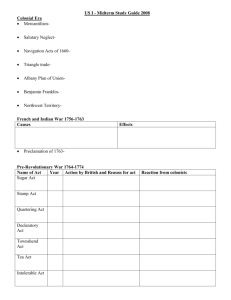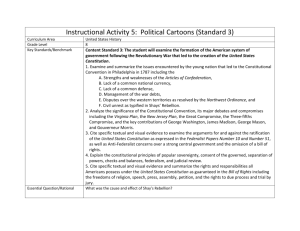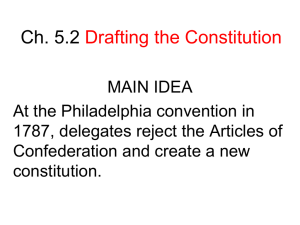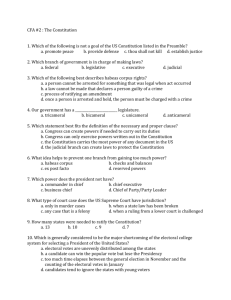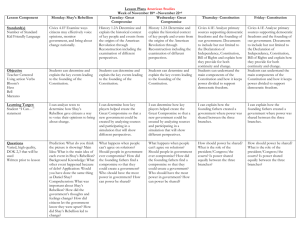Chapter 7 - Study Guide Key Terms to understand Constitution
advertisement
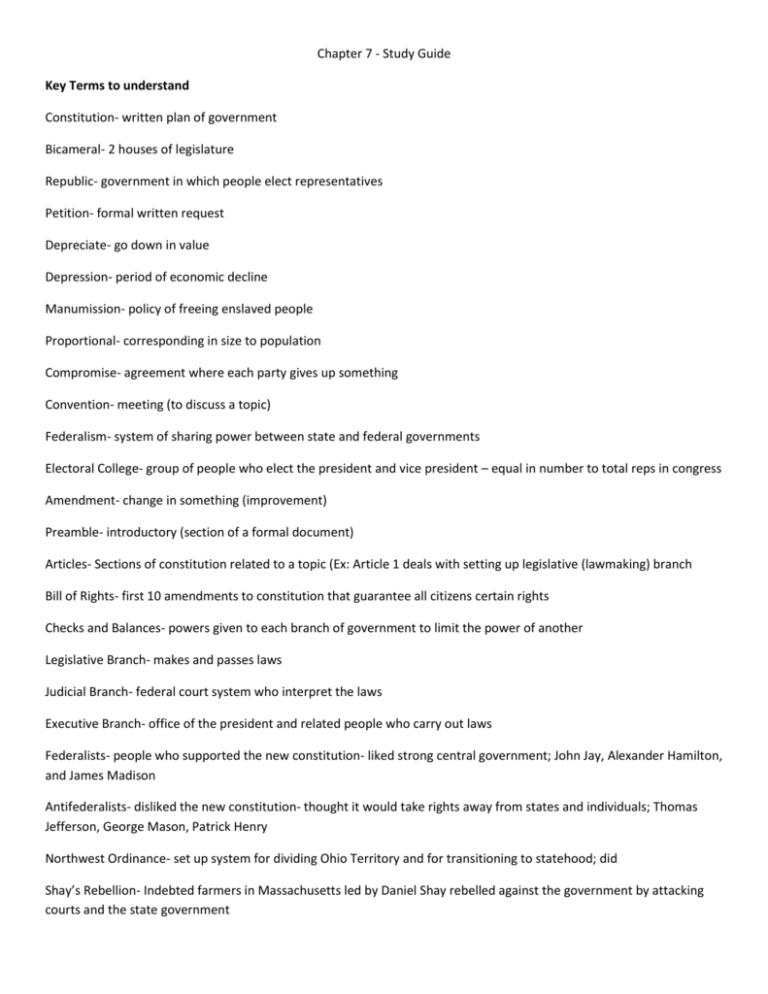
Chapter 7 - Study Guide Key Terms to understand Constitution- written plan of government Bicameral- 2 houses of legislature Republic- government in which people elect representatives Petition- formal written request Depreciate- go down in value Depression- period of economic decline Manumission- policy of freeing enslaved people Proportional- corresponding in size to population Compromise- agreement where each party gives up something Convention- meeting (to discuss a topic) Federalism- system of sharing power between state and federal governments Electoral College- group of people who elect the president and vice president – equal in number to total reps in congress Amendment- change in something (improvement) Preamble- introductory (section of a formal document) Articles- Sections of constitution related to a topic (Ex: Article 1 deals with setting up legislative (lawmaking) branch Bill of Rights- first 10 amendments to constitution that guarantee all citizens certain rights Checks and Balances- powers given to each branch of government to limit the power of another Legislative Branch- makes and passes laws Judicial Branch- federal court system who interpret the laws Executive Branch- office of the president and related people who carry out laws Federalists- people who supported the new constitution- liked strong central government; John Jay, Alexander Hamilton, and James Madison Antifederalists- disliked the new constitution- thought it would take rights away from states and individuals; Thomas Jefferson, George Mason, Patrick Henry Northwest Ordinance- set up system for dividing Ohio Territory and for transitioning to statehood; did Shay’s Rebellion- Indebted farmers in Massachusetts led by Daniel Shay rebelled against the government by attacking courts and the state government Articles of Confederation- created a loose alliance between the states and a weak central government Virginia Plan- 2 houses where representation was determined by population; big states liked this plan New Jersey Plan- 1 house with equal representation from all states; small states liked Great Compromise- 2 houses—one with population based representation, one with equal representation 3/5 Compromise- slaves would be counted as 3/5 of a person for the purpose of state representation , population, and taxation. Popular Sovereignty- People have the power Key PeopleDaniel Shays- Massachusetts farmer who led a rebellion against the state government Thomas Jefferson- antifederalist- wrote responses to the federalist papers; “a little rebellion now and again is a good thing” George Mason- antifederalist- would not sign the constitution without a bill of rights John Jay- federalist- wrote essays in defense of constitution called the federalist papers James Madison- federalist- father of constitution- also wrote essays- later reminded congress of their promise to add the Bill of Rights Alexander Hamilton- federalist- also wrote essays- elitist who felt that the wealthy and educated should rule Be able to explain: -separation of powers – state/federal -3 branches-checks and balances -federalists arguments for the constitution -antifederalists arguments against the constitution -significance of Shay’s Rebellion -details of Northwest Ordinance -weaknesses of Articles of Confederation
